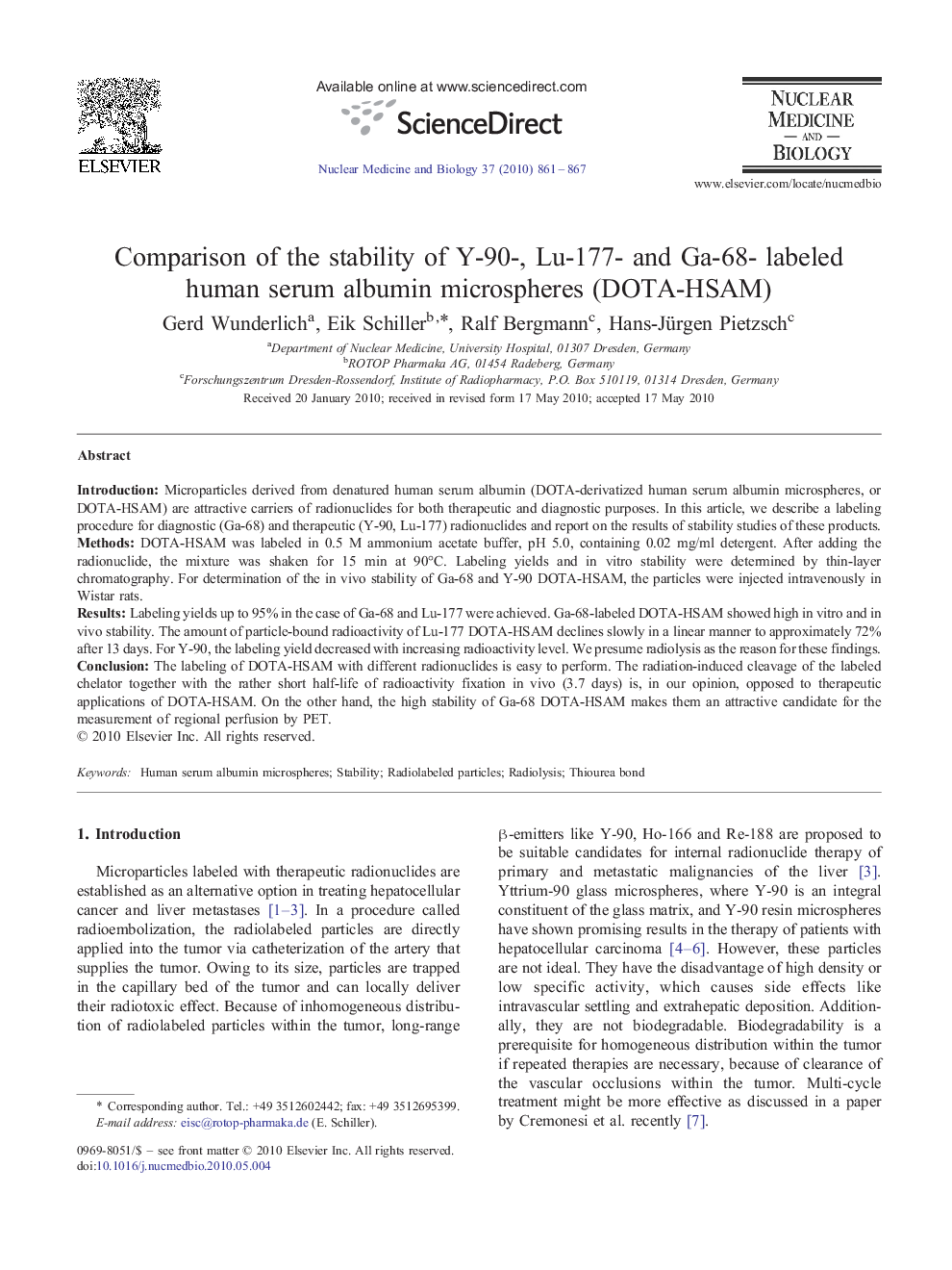| Article ID | Journal | Published Year | Pages | File Type |
|---|---|---|---|---|
| 2154384 | Nuclear Medicine and Biology | 2010 | 7 Pages |
IntroductionMicroparticles derived from denatured human serum albumin (DOTA-derivatized human serum albumin microspheres, or DOTA-HSAM) are attractive carriers of radionuclides for both therapeutic and diagnostic purposes. In this article, we describe a labeling procedure for diagnostic (Ga-68) and therapeutic (Y-90, Lu-177) radionuclides and report on the results of stability studies of these products.MethodsDOTA-HSAM was labeled in 0.5 M ammonium acetate buffer, pH 5.0, containing 0.02 mg/ml detergent. After adding the radionuclide, the mixture was shaken for 15 min at 90°C. Labeling yields and in vitro stability were determined by thin-layer chromatography. For determination of the in vivo stability of Ga-68 and Y-90 DOTA-HSAM, the particles were injected intravenously in Wistar rats.ResultsLabeling yields up to 95% in the case of Ga-68 and Lu-177 were achieved. Ga-68-labeled DOTA-HSAM showed high in vitro and in vivo stability. The amount of particle-bound radioactivity of Lu-177 DOTA-HSAM declines slowly in a linear manner to approximately 72% after 13 days. For Y-90, the labeling yield decreased with increasing radioactivity level. We presume radiolysis as the reason for these findings.ConclusionThe labeling of DOTA-HSAM with different radionuclides is easy to perform. The radiation-induced cleavage of the labeled chelator together with the rather short half-life of radioactivity fixation in vivo (3.7 days) is, in our opinion, opposed to therapeutic applications of DOTA-HSAM. On the other hand, the high stability of Ga-68 DOTA-HSAM makes them an attractive candidate for the measurement of regional perfusion by PET.
